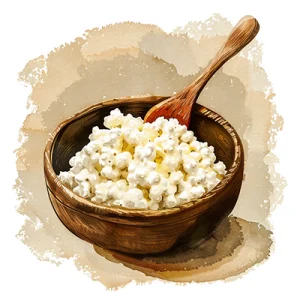WHAT TO DO ONCE YOUR KOMBUCHA SCOBY ARRIVES:
Your order will contain a single Kombucha Scoby and some starter tea. Once you receive your Kombucha Scoby from us, it’s best to get it fermenting as soon as possible. However, it will keep in the original packaging at room temperature until the activation date on the back of the packet.
You will probably notice some brown patches on your Kombucha Scoby and some brown, string-like objects floating around in your starter tea. Don’t worry: these are simply yeasts and a normal part of the Kombucha process. People often mistake these for mould, which they are not. So don’t panic when you see them. If you want further reassurance on the yeasts found when making kombucha, please do get in touch with us.
KOMBUCHA AND METAL:
You will often hear that you should not use metal utensils while making Kombucha. Although this holds some truth, it has been greatly exaggerated! Kombucha gets very acidic, if left in contact with metals for long periods of time, in theory it could degrade and rust the metal. That metal would then end up in the Kombucha and eventually in you. However, using a stainless steel strainer/sieve or spoon while making Kombucha will not cause any problems. The contact time between the metal utensils and Kombucha will always be very short. Never leave anything metal in contact with Kombucha for long periods of time.
BREWING JAR:
You need something to brew your Kombucha in. We recommend using something glass. Glass is much easier to clean and keep sterile. Plastic tends to degrade over time and is prone to scratches which can harbour unwanted bacteria. Plastic also carries a risk of chemical contamination from the materials contained inside of it such as BPA. A glass Kilner style jam jar is perfect to use.
STRAINER/SIEVE:
You also need a trainer and a stirring spoon.
WATER FILTER:
We also recommend you buy a water filter to remove the chlorine from your tap water. You can use bottled water, but this tends to get expensive.
JAR COVER:
You also need something to cover your jar with. We recommend paper kitchen towels as they are easy to discard and replace. You can also use a muslin cloth or similar if you wish. Rubber bands also come in handy to secure the cover to the jar.
You can also remove the rubber seal from the lid of any swing top jar (such as the Kilner jars supplied in our kits). With the seal removed you can close the lid while still allowing airflow during fermentation.
SAUCEPAN:
You need a saucepan to heat the water in.
GLASS BOTTLES:
You also need some bottles to store your Kombucha in. Again we recommend using glass bottles. We screw lid style bottles suitable for fermentation work best with Kombucha. If you are worried about explosions and glass, you can use plastic bottles. Plastic tends to degrade quickly. It also carries a risk breaking down into the mixture due to the acidness of Kombucha. Make sure you use BPA free plastic.
FUNNEL:
It is useful to get a funnel to help pour the liquid into the bottles.
GLASS/PLASTIC MEASURING JUG:
It is also useful to have something to decant your strained mixture into. Glass or plastic measuring jugs are perfect.
WHAT INGREDIENTS DO I NEED?
You only need 3 ingredients to make Kombucha. Tea, water and sugar. We recommend while starting out with your first batch of Kombucha that you only use black tea. Although you can use a variety of different types of tea to make Kombucha, some of these tea’s carry a risk of harming your Kombucha Scoby. You can experiment with different types of tea once you have spare Scoby’s at your disposal. You can use either loose tea or tea bags. We prefer to use organic loose tea and organic golden granulated cane sugar here at Freshly Fermented. However refined white sugar will work just as well. We do not recommend dark. unrefined sugar with Kombucha, as the culture will struggle to break it down.
You can use any tea to make Kombucha. However the better quality tea you use, the better the end result will be. We sell a range of organic certified loose tea that compliments any Kombucha on our shop.
BREWING YOUR TEA:
For 1 litre Kombucha Scoby: Add 900ml of non-chlorinated water to your saucepan and add 60g of sugar.
For 2 litre Kombucha Scoby: Add 1800ml of non-chlorinated water to your saucepan and add 120g of sugar.
For 5 litre Kombucha Scoby: Add 4500ml of non-chlorinated water to your saucepan and add 300g of sugar.
Stir the mixture and then begin to heat the water. You do not need to bring the water to boiling point. Doing so can ruin the flavour of your Kombucha. Ideally, you want the mixture to be between 65 to 80 Celsius. You can use a thermometer to check the temperature. However, just bringing the water to the stage just before it boils is adequate. If it does boil, simply allow it to cool back down for 10 minutes. Ensure you stir the mixture regularly as the water heats up so the sugar dissolves.
For 1 litre: Add 10g of tea (2 teabags) to the water.
For 2 litre: Add 20g of tea (4 teabags) to the water.
For 5 litre: Add 50g of tea (10 teabags) to the water.
Allow the tea too steep for around 15 minutes. If you have used loose tea, you will now need to strain out any tea leaves that may be left in the mixture. It is important to do this as any remaining tea leaves may go mouldy and can contaminate your Kombucha. Don’t over steep your tea as this will lead to a bitter taste. Next, allow your mixture cool back down to room temperature (21 Celsius). This is very important, never place your Kombucha Scoby into the warm/hot water, this can damage it.
THE FIRST BREW:
Pour your cooled mixture into your fermentation jar. Add the starter tea we sent you with your order. It is important to add starter tea to each batch of kombucha you brew. This helps reduce the risk of contamination from pathogens, and other unwanted bacteria by ensuring established Kombucha bacteria is the first to arrive into the mixture.
Add your Kombucha Scoby, cover the jar and leave it at room temperature (21 Celsius) for 5-12 days. At around 5 days the Kombucha will still be fairly sweet, at 12 it will have become more tart. This is a taste preference that you will acquire in your time making Kombucha. Personally, we prefer our Kombucha at around the 5 day mark.
The temperature will play a large part in the brewing process. During the warm summer months, a much shorter time is required to make Kombucha. During the winter it will take much longer.
Remove the Kombucha Scoby from the jar, remembering to take 10% of the Kombucha to use as the starter tea for your next batch. It is always best to take the starter tea from the top of the Kombucha mixture, as this contains the most bacteria.
PLEASE NOTE:
Never leave any fermenting product in direct sunlight. This can lead to unwanted bacteria and pathogens forming.
BOTTLING THE KOMBUCHA:
Using your plastic funnel, pour the remaining kombucha liquid into your glass bottles and then seal them by closing the lids. You can at this stage choose to add additional flavourings to your Kombucha. This is optional, but many find experimenting with different types of fruit great addition to making Kombucha tea. We like to use fresh ginger ourselves. Experiment with different flavours, Google has many recipes online.
Leaving the bottled Kombucha at room temperature (21 Celsius) for another 3-5 days will allow the Kombucha to carbonate. This is optional, and you can drink you Kombucha right away.
Place your bottles in the fridge and allow them to cool. Be very careful when opening the bottles. Kombucha can produce a fairly fizzy beverage that can explode out the bottle.
During the colder winter months it can take longer to carbonate. Anything from 7-14 days.
PLEASE NOTE:
If you have more than one fermenting food culture at home, we recommend that you keep them at least 1 metre apart from each other at all times. This is to stop cross contamination of the different cultures. If you are working with dairy in particular, this is very important. Please contact us is you require further assistance with fermenting more than one culture.





